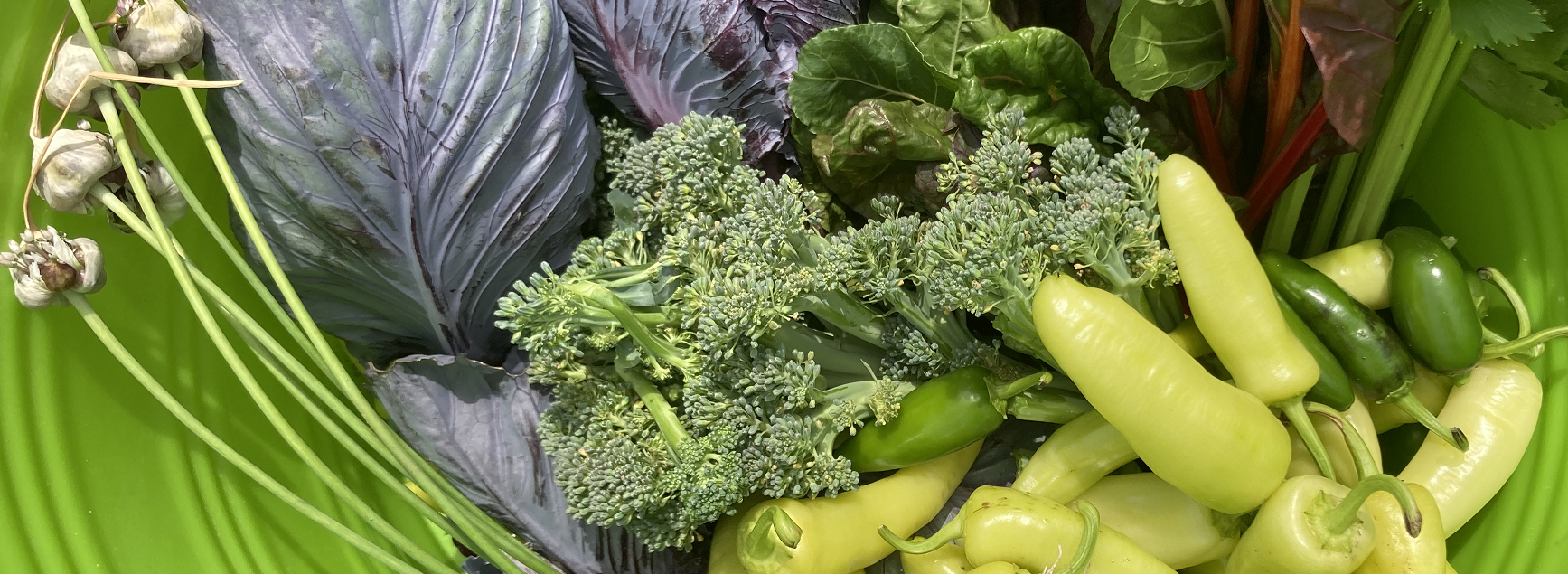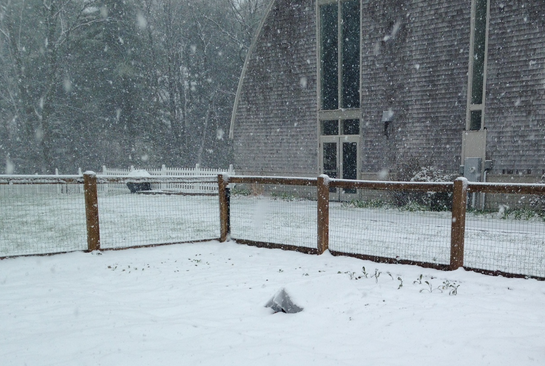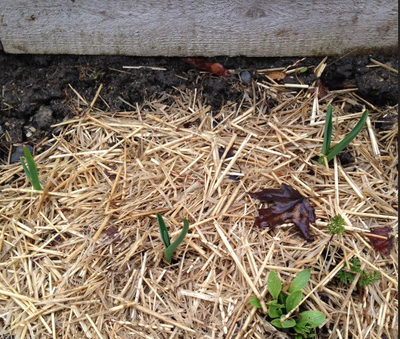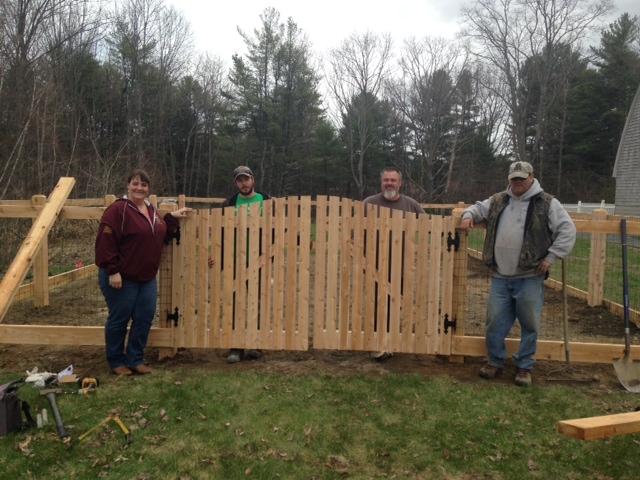|
July has been wet and weedy, but thanks to help from several talented and dedicated volunteers, we've revealed the peppers, chard, celery, and broccoli and cabbages ready to harvest for the food pantry. We appreciate all the help in the St Nick's Community Garden so far this season. Meanwhile gardeners are growing herbs and greens and other delicious veggies at Hillcrest for the pantry each week. Blue Point gardeners are growing, too. Thanks!
St Nicholas Community Garden Growing Season
12th June 2018 to 25th September 2018 (shorter by 6 weeks than 2018 season which ran 5/21/17 to 10/10/17) 406 Pounds (7% more than last season) Biggest Crops by Pounds 25% 103 lbs TOMATOES 13% 54 lbs LETTUCE, CHARD, KALE, GREENS 13 % 51 lbs BEANS 13% 51 lbs CUCUMBERS 4% 15 lbs EGGPLANTS Other crops included: beets, radishes, carrots, peppers, herbs and a variety of greens. JUNE TOTAL: 48 pounds WEEK FIVE (June 27 & 29)
WEEK FOUR (June 20 & 21)
WEEK THREE (June 13 & 15)
MAY TOTAL: 4.5 pounds WEEKS ONE & TWO (May 21 & 29)
And so starts the 2017 planting season! Gardeners from St.Nick's put in the first of our cold crops: green lettuce. About 100 romaine and green lettuce seedlings were planted, and a dozen or so parsley plants, too. Also lots of marigolds to keep smaller garden pests like mice and voles away and cosmos to attract pollinators.
Recently Overheard at the Pantry: "I haven't had these in such a long time, they are so expensive." (talking about just-picked fresh green beans)
"Wow, that all looks really nice. It's great for someone like me - I'm a vegetarian." "Thank you, gardeners, you keep on growing. It's wonderful what you are doing. I'm diabetic, and I'm trying to eat right." "The kids really love these." (talking about cucumbers) "Having a recipe is really helpful. I haven't tried that before." (talking about kale) "This must be really fresh; it still has some dirt on it!" (talking about beets just pulled from the garden) JULY TOTAL: 101 POUNDS WEEK TEN July 26 & 28, 2016
WEEK NINE: July 19 & 21, 2016
WEEK EIGHT: July 14, 2016
WEEK SEVEN: July 7, 2016
Counting the pounds at each harvest is fun, but we'd rather pick the squashes and zucchinis when they are small - they just taste better that way.
This is our second season of growing for the community, and we're pleased to report that thanks to an abundance of great compost, helping hands, and an earlier start, we were able to harvest before Memorial Day, a full month earlier than last season.
We've had a few ups and downs along the way: we had just spread about six yards of locally made 'surf'n'turf" compost, laid down some paths, and planted our early cold crops of spinach, kale, and peas...then oh, no! Snow! A few weeks later, we were celebrating the awesomeness of our spinach and lettuce harvests. What do they say about pride? Just as we were anticipating a second crop of lettuce, a wiley invader snuck in and ate it all up. All of it. Every. Single. Head. But on the whole things have been good in the garden. There are more herbs, which do a lot to wake up a meal that starts from a box or can. We've added new crops like bok choy, leeks, and garlic - the scapes are fantastically artful as well as tasty. It's now mid-July, and we're at week 9 with a dozen or so harvest days. Cold crops like spinach are giving way to summer treats like basil, peppers, and just-picked-can't-getter-better-than-that green beans. There is joy, too. Lots of joy. MAY & JUNE TOTAL: 125 1/2 pounds WEEK SIX: JUNE 30 & 28, 2016
WEEK FIVE: JUNE 21 & 23, 2016
WEEK FOUR: June 14, 2016
WEEK THREE: June 7, 2016
WEEK TWO: May 31, 2016
WEEK ONE: May 24 & 26, 2016
SPRING WORK DAY - MAY 25th Thank you, Jane, Linda, Sabra, Becky, Pam, Elizabeth and Steffi -- volunteers planted tomatoes, broccoli, peppers, beets, beans, lettuces, bok choy and Asian greens, herbs and flowers, too! SPRING WORK DAY - APRIL 23rd Thank you, Mark, Chris, Cathy, Jane, Becky, and Chris! We raked all the compost and set the paths, even planted spinach and lettuce! Aren't those rows neat!? Also we love our new coconut mat paths. We also had a visit from Kate Irish Collins of the Current-- you can read the article here (PDF).
Today Dennis from Jordan's Farm delivered 6 yards of organic compost "surf & turf" which is locally produced. This, along with the soil amendments put in last fall, will set us up for a great growing season. A few days earlier Chris roto-tilled the seaweed and shredded leaves which were put on as we put the garden to bed last fall. Look what he found: a beet and a carrot! And Jane spied the first garlic scapes coming through.
June to September 2015 Harvest Total: 147 pounds WEEK THIRTEEN: September 29, 2015
WEEK TWELVE: September 22, 2015
WEEK ELEVEN: September 15, 2015
We've had good luck with the weather to get our first seeds to sprout - and soon we'll be thinning the lettuces and kale. Look along the fence, the first beans are coming up, too.
We are grateful to all who joined us, and the Cumberland County Master Gardeners, for our first-ever Community Garden Work Day on Saturday, May 2nd. Nearly 30 volunteers helped us to get so much done! We planted early seeds and seedlings, created paths and planting areas, pruned and cleared brush, removed stones from the soil, made plant markers and plant pots, organized the tool shed, nourished the children's garden, and tended the St. Nick's meditation and perennial gardens. AND we moved 8 yards of loam, too! We thank all the volunteers for their hard work and generous spirits, and hope they enjoyed the day as much as we did.
Ron Forest and Sons Co. installed our garden gate and fence today! They built it sturdy and strong so the fence can act as a trellis to support climbing plants, helping to maximize growing space.
We have a pretty good idea about what we want to plant...what we may be successful growing. But we also wanted to know what our neighbors would like us to grow. So we polled patrons of the Scarborough Food Pantry to tell us which veggies were their family's favorites, and which were often too expensive to buy. Many asked for tomatoes, beets, and green beans. Also lettuces and salad greens, herbs, and carrots. The Steering Committee is developing a plan for planting sequential, dense plantings and to focus on easy to grow and high yield vegetables and herbs for the first season. Crops that most closely fit the bill include: peas, lettuces, green and yellow beans, summer and fall squashes, tomatoes and peppers, spinach, Swiss chard, kale, spring onions, herbs (basil, thyme, parsley, cilantro, oregano, dill, etc.), as well as beets and carrots.
Thanks to our good friends at R J Grondin and Sons and Coastline Irrigation, we have a garden!
R J Grondin & Sons volunteered time and materials to dig the plot and turn the earth and level the plot just before Thanksgiving. Coastline Irrigation installed a fully automated irrigation system which is expandable as needed. A rain gauge is also part of the system, so that it won’t water when raining. This phase of the garden was generously funded by a grant from the Episcopal Diocese of Maine.  Volunteer, Chris Taylor, spread the greensand on the garden and raked it in this morning. And got it done before the snow storm! What's greensand? Greensand fertilizer is a mineral called glauconite which has been used since the eighteenth century as a soil amendment and slow-releasing fertilizer (0-0-3). Found on the ocean floor and mined for use as an organic fertilizer and soil conditioner, it helps improve soil texture and enriching the nutrient content without using harsh chemicals which can burn tender roots. Greensand comes from sandy rock or sediment containing a high percentage of the mineral glauconite (greenish-black to blue-green). One of the best organic sources of potassium, greensand also contains potash, magnesium, iron, silica and can contain as many as 30 other trace minerals. It improves plant health in general and is also be used to loosen heavy, clay soils, which increases drainage and allows oxygen into the soil. It will also improve the moisture retention of sandy soils.  We sent a soil sample to the University of Maine and the results are in! Our soil is in pretty good shape, with no major issues. Some nourishment of the soil is needed, and can be easily accomplished by an application of compost, organic matter, and greensand. Ideally we'll amend the soil in the Fall so that it has time to incorporate into the garden before planting in the Spring. |
Categories
All
News Archive
July 2022
|






















 RSS Feed
RSS Feed
